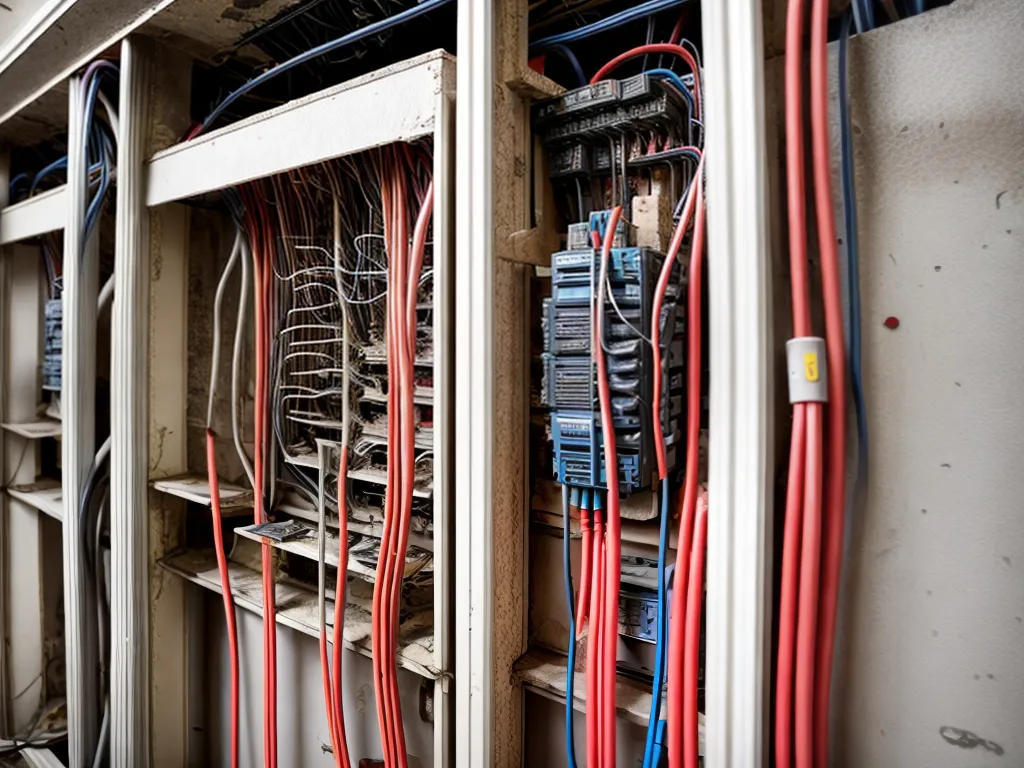
Unexpected electrical surges can cause damage and disrupt operations in older commercial buildings. As the manager of an aging office building or retail space, I need to be prepared to troubleshoot and resolve unexpected power spikes and fluctuations. By understanding common causes, testing surge protection systems, and isolating affected equipment, I can minimize downtime and prevent damage.
Common Causes of Electrical Surges
Electrical surges have many potential causes. By understanding the most frequent triggers, I can more efficiently track down the source of unexpected power spikes in my building.
Faulty Connections
Loose wiring and corroded connections can lead to arcing, which causes erratic power delivery. I should inspect the main electrical service panel and any subpanels for signs of overheating, discoloration, or vibration from arcing contacts. Re-tightening loose lugs and replacing any damaged wires or contacts can eliminate transient surges from arc faults.
Lightning Strikes
Nearby lightning strikes can induce power surges by electromagnetic induction. Installing a whole building surge protection system with proper lightning protection helps guard against surges entering through power lines. I should also check for any evident lightning damage to electrical equipment like transformers, which could indicate a direct lightning strike.
Load Shifting
When large electrical loads like HVAC systems or industrial machinery cycle on and off, they cause brief dips and swells in voltage. Adding power conditioning equipment and strategically staggering the operation of large motor-driven loads can prevent disruptive surges from load shifting.
Grid Switching
Utility equipment like transformers, reclosers and capacitor banks switching on and off can cause fluctuations in power delivery. Although I have no control over the electric grid, knowing the timing of any utility work in my area can help correlate surges with grid switching events.
Internal Short Circuits
Malfunctioning electrical equipment like transformers, motors and ballasts with internal short circuits will draw excessive current, causing voltage drops. I should isolate any suspect equipment and have it tested by an electrician. Replacement or repair of faulty components will be needed to prevent recurrent surges.
Testing Surge Protection Systems
Since power surges can enter a building in multiple ways, a layered surge protection approach is needed. I should test all surge protection systems to ensure proper functioning.
Main Switchboard SPD
The primary level of defense is a surge protection device (SPD) installed at the main electrical switchboard. This broad-spectrum SPD should be designed to handle a high surge current rating. I need to periodically check its status lights and display codes for any fault indications. Doing scheduled diagnostic testing or replacing it after a major surge event helps confirm proper operation.
Subpanel SPDs
Any subpanels feeding sensitive electronic equipment like computers should have dedicated SPDs. Testing them requires temporarily using a surge generator to inject sample surge waveforms and verifying proper response. Their surge current capacity must match the loads.
Power Strips
Plug-in power strips with integrated surge protection are the last line of defense for sensitive electronics. I should not rely solely on power strips but use them to supplement main SPDs. Testing involves plugging in a surge simulator to confirm proper clamping of test surges without overheating or failure.
UPS Systems
An uninterruptible power supply (UPS) system with battery backup also provides surge protection. Periodically testing the UPS by switching to battery power and generating test surges can validate proper operation. Monitoring any diagnostic indicators for battery condition or overload will indicate if the UPS needs service.
Isolating Affected Equipment
When electrical surges cause equipment damage or interference, methodically isolating the affected systems helps pinpoint the source.
Check for Tripped Breakers
I should scan the breaker panel for any breakers that have tripped, which likely supply the equipment experiencing surges. Switching off individual breakers can verify which circuit has the issue. I may need to disconnect downline sections of the circuit if tripping does not isolate the problem.
Inspect Electrical Panels
Opening electrical panels and junction boxes to visually inspect for any signs of damage, overheating, or arcing can reveal issues like faulty connections. I should pay particular attention to any aluminum wiring, which is prone to breakdown over time.
Check Voltage
Using a digital multimeter to check the voltage throughout an affected circuit will show any locations with abnormal voltage levels. Dropping voltage can indicate excessive loads, while elevated voltage may result from surges bypassing surge protectors.
Swap Related Equipment
Exchanging suspected surge-damaged devices like computers, printers and controllers with identical working units can help verify whether they are the source of problems. Faulty equipment will need repair or replacement if operation does not improve.
Careful troubleshooting and testing of electrical systems helps me minimize disruptions from unexpected power surges in older buildings. By taking a systematic approach and utilizing surge protective equipment, I can greatly reduce downtime and prevent damage to sensitive electronics and equipment.